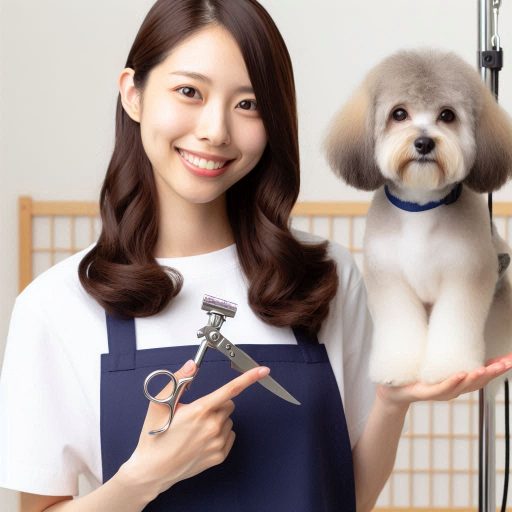Introduction
Nail disorders are crucial for nail technicians to understand.
These disorders can significantly impact both the appearance and health of nails.
Healthy nails reflect a person’s overall wellness, while unhealthy nails can signal underlying health issues.
Technicians must recognize the signs of common nail disorders, such as fungal infections, ingrown nails, and psoriasis.
These conditions can lead to discomfort, pain, or embarrassment for clients.
For example, fungal infections can cause discoloration and brittleness.
Ingrown nails can result in redness and swelling, while psoriasis can produce thickened, pitted nails.
Each disorder affects how clients feel about their nails and their willingness to seek treatments.
Nail technicians play a vital role in identifying and addressing these issues.
By observing changes in nail color, texture, or shape, technicians can spot potential problems early.
This early identification allows for timely referrals to healthcare providers when necessary.
Technicians can also educate clients on proper nail care, hygiene, and preventive measures.
By understanding nail disorders, technicians enhance their professionalism and improve client satisfaction.
Educated technicians can help clients maintain healthy nails, leading to better overall nail health.
A well-informed approach ensures that clients leave with confidence in their nail care choices.
In summary, understanding nail disorders is essential for nail technicians and their clients.
Understanding Common Nail Disorders
What nail disorders are
Nail disorders refer to any condition that affects the nails, causing changes in their appearance, texture, or growth.
These disorders can range from mild to severe, impacting both the aesthetics and functionality of the nails.
Examples of Common Nail Disorders
- Fungal Infections: Fungal infections are one of the most common nail disorders, characterized by discoloration, thickening, and crumbling of the nails.
They are often caused by exposure to damp environments and poor hygiene practices. - Ingrown Nails: Ingrown nails occur when the nail grows into the surrounding skin, leading to pain, swelling, and infection.
Causes include improper nail trimming, wearing tight shoes, and trauma to the nail. - Psoriasis: Psoriasis is a chronic skin condition that can affect the nails, causing thickening, pitting, and discoloration.
It is an autoimmune disorder that results in the rapid turnover of skin cells.
Causes and Symptoms of Each Nail Disorder
Fungal Infections
Causes of fungal infections include exposure to warm, damp environments (such as swimming pools and locker rooms), poor hygiene, and compromised immune systems.
Symptoms may include yellowing, thickening, brittleness, and a foul odor in the affected nails.
Transform Your Career Today
Unlock a personalized career strategy that drives real results. Get tailored advice and a roadmap designed just for you.
Start NowIngrown Nails
Ingrown nails can be caused by improper trimming, wearing tight shoes, trauma, or genetics.
Symptoms include pain, redness, swelling, and sometimes pus or drainage from the affected nail.
Psoriasis
The exact cause of psoriasis is unknown, but genetics and an overactive immune system play a role.
Symptoms of nail psoriasis may include pitting, ridges, discoloration, crumbling, and separation of the nail from the nail bed.
By understanding the common nail disorders, nail technicians can better identify and address these conditions in their clients, recommending appropriate treatments or referrals to healthcare providers when necessary.
Read: Creating a Comfortable Atmosphere in Your Nail Salon
Importance of Proper Diagnosis
Why it is crucial for nail technicians to accurately diagnose nail disorders
Nail technicians play a crucial role in maintaining clients’ nail health.
Accurately diagnosing nail disorders is essential for several reasons.
First, it ensures the right treatment plan.
A proper diagnosis helps technicians choose effective products and techniques.
This targeted approach promotes healing and prevents further issues.
The risks of misdiagnosis or neglecting nail disorders
Misdiagnosis can lead to severe consequences.
If a technician mistakes a fungal infection for a simple nail polish issue, the problem may worsen.
Neglecting nail disorders can result in chronic pain, infections, or permanent damage.
In some cases, untreated conditions may require medical intervention.
Additionally, misdiagnosis affects client trust. Clients rely on technicians for expertise and advice.
If a technician overlooks a serious condition, the client may seek services elsewhere.
Building a strong relationship with clients hinges on their confidence in the technician’s knowledge.
Impact of early detection and treatment on nail health
Early detection of nail disorders is vital. Identifying issues like fungal infections or psoriasis at their onset can lead to better outcomes.
Showcase Your Business Today
Reach thousands of readers actively exploring professional services. Publish your business profile and grow your audience now.
Publish NowClients benefit from timely treatment, which can reduce the risk of complications.
Early intervention also decreases the likelihood of spreading infections to other nails or clients.
Moreover, education plays a significant role in proper diagnosis.
Nail technicians should stay updated on the latest nail disorders and treatment methods.
Regular training can improve diagnostic skills and enhance service quality.
This ongoing education helps technicians recognize the signs of various conditions accurately.
In short, proper diagnosis is fundamental for nail technicians.
It protects clients’ health, builds trust, and promotes effective treatment.
By prioritizing accurate diagnosis and early detection, technicians contribute to overall nail health and well-being.
Read: Pet Grooming Techniques for Different Breeds
Tools and Techniques for Identifying Nail Disorders
The tools and equipment needed to examine nails for disorders
When it comes to identifying nail disorders, having the right tools and equipment is essential for a thorough examination.
Here are some of the basic tools needed:
- Handheld magnifying glass or loupe: This tool can help you get a closer look at the nail plate and surrounding skin.
- Nail clippers and files: Trimming and shaping the nails can reveal underlying issues such as discoloration or changes in texture.
- Wood’s lamp: This specialized lamp can help detect fungal infections by illuminating fungal elements on the nail surface.
- Cuticle pusher: Pushing back the cuticles can expose any abnormalities at the base of the nail.
- Cotton balls or swabs: These can be used to apply solutions for testing or cleaning the nail surface.
Techniques for Assessing Nails for Abnormalities
Once you have the necessary tools, it’s important to know how to use them effectively to identify nail disorders.
Here are some techniques to consider:
- Visual inspection: Start by examining the color, shape, texture, and thickness of the nails for any noticeable changes.
- Palpation: Gently press on the nail plate to check for tenderness, firmness, or other abnormalities.
- Smell: Some nail disorders, such as fungal infections, may have a distinct odor that can be detected during examination.
- Ask questions: Inquire about any recent trauma, changes in health, or medications that may be affecting the nails.
- Refer to charts and reference guides: Use visual aids to compare the nails to common nail disorders for accurate identification.
Tips for Performing a Thorough Nail Assessment during a Client Consultation
During a client consultation, it’s crucial to conduct a comprehensive nail assessment to provide appropriate care and recommendations.
Here are some tips to keep in mind:
- Establish rapport: Build trust with your client to encourage open communication about their nail health and any concerns they may have.
- Take detailed notes: Document any observations, measurements, and client responses to assist in tracking changes over time.
- Use good lighting: Ensure you have adequate lighting to accurately assess the nails and detect subtle abnormalities.
- Encourage regular check-ups: Suggest follow-up appointments to monitor progress and adjust treatment plans as needed.
- Provide education: Offer information on proper nail care, hygiene practices, and lifestyle changes to promote nail health.
By utilizing the right tools, techniques, and tips for assessing nail disorders, nail technicians can better serve their clients and support overall nail health.
Read: How to Transition from Part-Time to Full-Taime Nail Tech

Communicating with Clients about Nail Disorders
When it comes to discussing potential nail disorders with clients, it is essential to approach the conversation with sensitivity and professionalism.
Communicating effectively with clients about their nail health requires clear and concise information, as well as empathy and understanding.
Strategies for Approaching Clients about Potential Nail Disorders
- Start by creating a comfortable and non-judgmental environment for the conversation.
- Schedule a private consultation to discuss any concerns the client may have about their nails.
- Use non-threatening language and avoid using medical jargon that the client may not understand.
- Provide visual aids, such as pictures or diagrams, to help clients understand the potential nail disorder.
Importance of Maintaining Professionalism and Empathy
- Showing empathy towards clients’ concerns can help build trust and rapport.
- Respect clients’ feelings and emotions when discussing sensitive topics related to nail health.
- Demonstrate professionalism by being knowledgeable about different nail disorders and treatment options.
- Ensure confidentiality and reassure clients that their information will be kept private.
Recommendations for Educating Clients on Proper Nail Care
- Provide clients with educational materials, such as brochures or pamphlets, about nail health.
- Offer tips on proper nail hygiene, including regular washing and trimming of nails.
- Discuss the importance of using quality nail products and avoiding harsh chemicals.
- Recommend treatment options and suggest visiting a healthcare professional for further evaluation if needed.
In short, effective communication with clients about potential nail disorders requires a careful balance of professionalism, empathy, and education.
By approaching the conversation with sensitivity and providing clients with the necessary information and support, nail technicians can help promote healthy nail care practices and overall well-being.
Read: Importance of Continuous Education in Nail Technology
Treatment Options for Nail Disorders
Different treatment options available for common nail disorders
When it comes to treating common nail disorders, there are a variety of options available.
One common treatment is the use of antifungal medications, which can help eliminate fungal infections.
Another option is to apply topical creams or ointments that contain ingredients like urea or lactic acid.
In severe cases, oral medications may be prescribed by a healthcare professional to address the issue.
Role of nail technicians in providing basic care and support for clients with nail disorders
Nail technicians play a crucial role in providing basic care and support for clients with nail disorders.
They can offer advice on proper nail care practices, recommend products, and suggest lifestyle changes to improve nail health.
Nail technicians should also know when to refer clients to medical professionals for advanced treatment.
It is essential to recognize when a nail disorder requires professional medical attention beyond the scope of a nail technician.
Resources for referring clients to medical professionals for advanced treatment
By referring clients to dermatologists or podiatrists, nail technicians can ensure they receive the appropriate care for their condition.
Educating clients on the importance of seeking medical advice for persistent or worsening nail issues is also crucial.
Providing resources such as brochures, website links, or contact information for medical professionals can be helpful.
Collaborating with healthcare providers can lead to better outcomes for clients with nail disorders, ensuring they receive comprehensive care.
Ultimately, the goal is to empower clients to take charge of their nail health and seek appropriate treatment when needed.
Preventative Measures and Maintenance
Preventing nail disorders is crucial for maintaining healthy nails.
By following these tips and recommendations, you can avoid common nail issues and promote overall nail health.
Importance of Preventative Measures
- Regularly moisturize your nails and cuticles to prevent dryness and brittleness.
- Avoid using harsh chemicals and nail products that can damage the nails.
- Wear gloves when doing household chores or working with chemicals to protect your nails.
- Keep your nails trimmed and filed to prevent breakage and ingrown nails.
- Avoid biting your nails, as this can introduce bacteria and lead to infections.
Tips for Maintaining Healthy Nails
- Eat a balanced diet rich in vitamins and minerals to support nail health.
- Avoid using your nails as tools to open cans or packages to prevent damage.
- Do not cut or push back your cuticles aggressively, as this can lead to infection.
- Allow your nails to breathe by giving them breaks from nail polish and acrylics.
- Clean and disinfect your nail tools regularly to prevent the spread of bacteria.
At-Home Care Routines
- Use a gentle nail polish remover to prevent drying out your nails.
- Apply a strengthening nail treatment to promote healthy nail growth.
- Massage your nails and cuticles with nourishing oils like jojoba or coconut oil.
- Avoid using acetone-based nail polish removers, as they can be harsh on the nails.
- Consider taking biotin supplements to support nail growth and strength.
By incorporating these preventative measures and maintenance tips into your nail care routine, you can keep your nails looking and feeling their best.
Remember, healthy nails are a reflection of overall health, so taking care of them is essential.
Showcase Your Business Today
Reach thousands of readers actively exploring professional services. Publish your business profile and grow your audience now.
Publish NowConclusion
Understanding nail disorders is crucial for nail technicians to provide proper care and treatment for clients.
By recognizing the signs and symptoms of various nail conditions, technicians can offer effective solutions and improve the overall health of their clients’ nails.
It is important for nail technicians to stay updated with the latest industry trends and techniques through ongoing education and training.
This will not only enhance their skills but also enable them to better serve clients with nail disorders and ensure their satisfaction.
By investing in education and training, nail technicians can establish themselves as trusted professionals in the industry.
Their expertise in identifying and addressing nail disorders will set them apart from the competition and attract a loyal clientele who value their knowledge and skills.
[E-Books for Sale]
The Big Book of 500 High-Paying Jobs in America: Unlock Your Earning Potential
$19.99 • 500 High-Paying Jobs • 330 pages
Explore 500 high-paying jobs in America and learn how to boost your career, earn more, and achieve success!
See All 500 High-Paying Jobs of this E-Book
1001 Professions Without a Degree: High-Paying American Jobs You Can Start Now
$19.99 • 1001 Professions Without a Degree • 174 pages
Discover 1001 high-paying jobs without a degree! Unlock career tips, skills, and success strategies for just $19.99!




